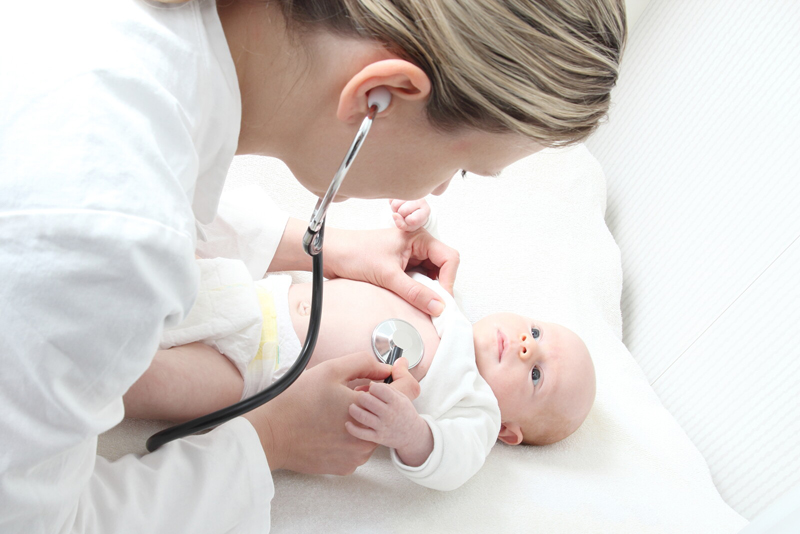Also referred to as birth defects, congenital anomalies may result from pregnancy or birth complications or genetic malformation. These anomalies include congenital malformations, deformations, and chromosomal abnormalities. When it comes to medical billing service, birth defects may be the principal diagnosis or they will be considered as additional diagnosis, depending on the circumstances of the encounter.
According to CDC, birth defects affect one in every 33 babies born in the United States each year and this is the leading cause of infant deaths, accounting for 20% of all infant deaths. Some of the common birth defects include heart defects, cleft lip with or without cleft palate, Down syndrome and spina bifida, Trisomy 18, gastroschisis, and Omphalocele. Such inborn syndromes and malformations can affect the organs, senses, limbs, physical and mental development. It can also cause pregnancy loss through miscarriage and stillbirth. While some conditions can be recognized at birth, others become apparent later in life. Some congenital anomalies can produce long-term disabilities that require a lifetime of care.
Congenital abnormalities can be chromosome abnormalities like Down syndrome; single-gene abnormalities like autosomal dominant inheritance; conditions occurring during pregnancy that cause abnormalities at birth like diabetes; genetic factors combining with environmental factors to cause spina bifida; or even any unknown cause.
January Is National Birth Defects Prevention Month
January is observed as National Birth Defects Prevention Month, which is a nationwide effort to raise awareness of birth defects, their causes, and their impact. The theme for 2020 is “Best for You. Best for Baby.”
Though all birth defects cannot be prevented, following certain practices will help to have a healthy pregnancy. The National Birth Defects Prevention Network (NBDPN) recommends certain best practices for pregnant women to prevent birth defects, which include:
- Intake of 400 micrograms (mcg) of folic acid daily
- Consult healthcare provider before starting or stopping any medicine
- Stay up-to-date with all vaccines including flu shots
- Reach a healthy weight before getting pregnant
- Avoid harmful substances (alcohol, tobacco) during pregnancy
ICD-10 Codes for Reporting Birth Defects
Congenital malformations of different areas can be coded as –
Q00-Q07 Congenital malformations of the nervous system
- Q01 Encephalocele
- Q02 Microcephaly
- Q03 Congenital hydrocephalus
- Q05 Spina bifida
Q10-Q18 Congenital malformations of eye, ear, face, and neck
- Q10 Eyelid, lacrimal apparatus and orbit
- Q11 Anophthalmos, microphthalmos and macrophthalmos
- Q12 Congenital lens malformations
- Q16 Ear, causing impairment of hearing
Q20-Q28 Congenital malformations of the circulatory system
- Q20 Cardiac chambers and connections
- Q21 Cardiac septa
- Q26 Great veins
Q30-Q34 Congenital malformations of the respiratory system
- Q30 Nose
- Q31 Larynx
- Q32 Trachea and bronchus
- Q33 Lung
Q35-Q37 Cleft lip and cleft palate
- Q35 Cleft palate
- Q36 Cleft lip
- Q37 Cleft palate with cleft lip
Q38-Q45 Other congenital malformations of the digestive system
- Q38 Tongue, mouth and pharynx
- Q39 Esophagus
- Q40 Upper alimentary tract
- Q43 Intestine
- Q44 Gallbladder, bile ducts and liver
Q50-Q56 Congenital malformations of genital organs
- Q50 Ovaries, fallopian tubes and broad ligaments
- Q51 Uterus and cervix
- Q54 Hypospadias
Q60-Q64 Congenital malformations of the urinary system
- Q60 Renal agenesis and other reduction defects of kidney
- Q61 Cystic kidney disease
- Q62 Congenital obstructive defects of renal pelvis and congenital malformations of ureter
Q65-Q79 Congenital malformations and deformations of the musculoskeletal system
- Q65 Congenital deformities of hip
- Q66 Congenital deformities of feet
- Q69 Polydactyly
- Q70 Syndactyly
- Q76 Congenital malformations of spine and bony thorax
- Q77 Osteochondrodysplasia with defects of growth of tubular bones and spine
Q80-Q89 Other congenital malformations
- Q80 Congenital ichthyosis
- Q81 Epidermolysis bullosa
- Q83 Congenital malformations of breast
Q90-Q99 Chromosomal abnormalities, not elsewhere classified
- Q90 Down syndrome
- Q91 Trisomy 18 and Trisomy 13
- Q96 Turner’s syndrome
Doctors treating birth defects can consider partnering with a reliable medical coding company to report the conditions they treat with accurate diagnosis and procedure codes.




